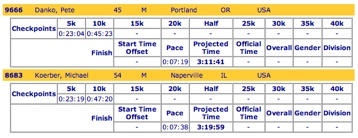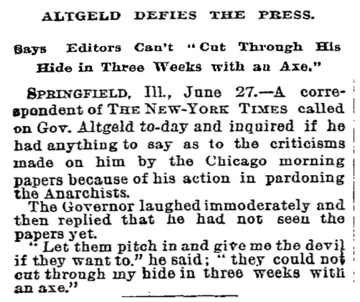Sitting in Terminal 3, Concourse L, waiting for my American Airlines flight back to San Francisco. Mission accomplished, mostly. My dad’s out of his rehab hospital, safely ensconced back in his North Side apartment (thanks to the heroic efforts of my sister Ann and brother-in-law Dan). Wish I was staying longer or lived much closer so that my visits didn’t require absenting myself from the rest of my life. And I wish I could have gotten out of town without starting a family fight, taking my dad’s keys with me, and forgetting my camera.
So, just about to board the plane. Flying in the economy cabin, which is really the “you’ll take whatever we dish out” Greyhound section of the plane. Fine. I did manage a moment of first-class treatment coming and going.
Flying out of San Francisco, I was very late getting to the airport. The person who checked in my baggage directed me to get in the nearest line through the security checkpoint. She actually said “hurry!” Densely, all I noted when I first got in line was that it was a lot shorter than the other one I could see. “Why don’t some of those people come over here?” I wondered. Then I saw a big sign that I had missed: VIP/First Class Security Check, or something like that. I thought for a millisecond, just out of a sense of heeding the ordained order of things, about getting out of the line and going to the one for serfs, helots and general unfortunates. But I stayed put. I figured I’d tell the TSA officer checking boarding passes and IDs that I’d been told to hustle my way to the gate and that I needed to be in this line.
And, after rehearsal, that’s the short speech I gave. I girded for a scowl or raised eyebrow. Instead, I got a smile. “I don’t care,” the officer said. “Just have a good trip.”
Wow.
So fast-forward to this afternoon. I was in a long security line in the American terminal, and for some reason one of the carrier’s line minders asked to see my boarding pass. I showed it to her, and she said, “Sir, please go down there and go through that line.” “Why?” I asked, with more than a trace of suspicion, bordering on resistance. “It’s closer to your gate,” she said.
So I went down the terminal a ways and stood in the next line, which was much, much shorter. “Thanks, line minder,” I thought to myself.
Then a woman behind me began complaining about O’Hare and all the long lines and about what a nightmare it would be if she had been traveling “without status.” It was then I noticed the sign that said I was standing in the line reserved for elite passengers. No wonder it was short.
But glancing around, I realized the TSA people inspecting documents weren’t looking to see whether any non-million-mile flyers were trying to sneak through. So I stayed in the line and avoided a good 30- or 45-minute wait with the serfs, helots, etc.
Which all goes to show — what, exactly? Don’t put too much stock in those VIP signs. And if you want to enjoy VIP perks without the headaches of actually being a VIP — paparazzi, congressional inquiries, rehab and the like — I highly recommend the special security check-in line. (Meantime, back in serfworld, American has just announced our flight is delayed indefinitely.)
Technorati Tags: chicago, travel
Like this:
Like Loading...


